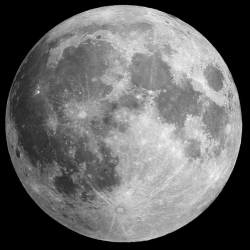
The last time we put a human on the moon was 1972, over four decades ago. The space race dreams of a moon colony have so far not materialised. Since then we’ve learned a lot about the moon. Our probes and robots have revealed it’s a harsh, barren space boulder with a nightmarish environment. But, you know what else we’ve learned?
In the last 40 years we’ve also learned that while Earth and the Moon are very different in many ways, there are a lot of similarities, too, and these similarities can help us explore how to someday colonise our celestial cohort. The moon itself is a craggy, 1,000-mile-wide rock. During the Apollo missions between 1969 and 1972, 12 American spacemen set foot on the moon, and hauled back a whopping 842 pounds of rock and soil samples. Those samples revealed that the moon’s makeup is similar to Earth’s.
The rocks also revealed some of the moon’s possible origin: As one theory goes, a Mars-sized planetoid rammed into Earth 4.5 billion years ago, and a chunk of cosmic shrapnel flew into Earth’s orbit, becoming the moon. Sending bots to the moon is far from new: The first one was sent up by the Soviets in 1970. But the moon has represented the kind of exploration humans are capable of, so debates have raged on as to whether we’re wasting time sending machines, when we should be getting back to our Apollo roots and sending actual people.
“The debate over the relative merits of manned versus robotic exploration of space can be an emotional one,” citizen science site MoonZoo.org writes. “With the miniaturisation of electronics, robotic probes will always be cheaper and more reliable than human spacecraft. However, many people think that the excitement of the space program depends on having human participants.”
There could be billions of metric tonnes of water hidden in the Moon. And that water is vital, just as it is on Earth. It’s a galactic Swiss Army knife. “You can drink it, use it to shield you from cosmic radiation, [use it in] food and sanitation, and crack it into oxygen to breathe,” he says.” In the form of liquid hydrogen and liquid oxygen, it is the most powerful chemical rocket propellant known.”
“Water is the most useful substance in space,” continues Spudis. The obstacle? Figuring out the best way to find, and mine, the Moon water. To do this, we (“we” meaning robots, at least at first) need to do lots of lunar experiments. What’s the nature of the Moon’s poles? Where is the water stored? We can answer those questions using robots, a couple of surface rovers, like Curiosity on Mars. These rovers can measure temperatures, slopes, surface properties, and the measurements of existing ice. Once we figure out a way to locate this vital resource on the Moon, the real progress can begin.
